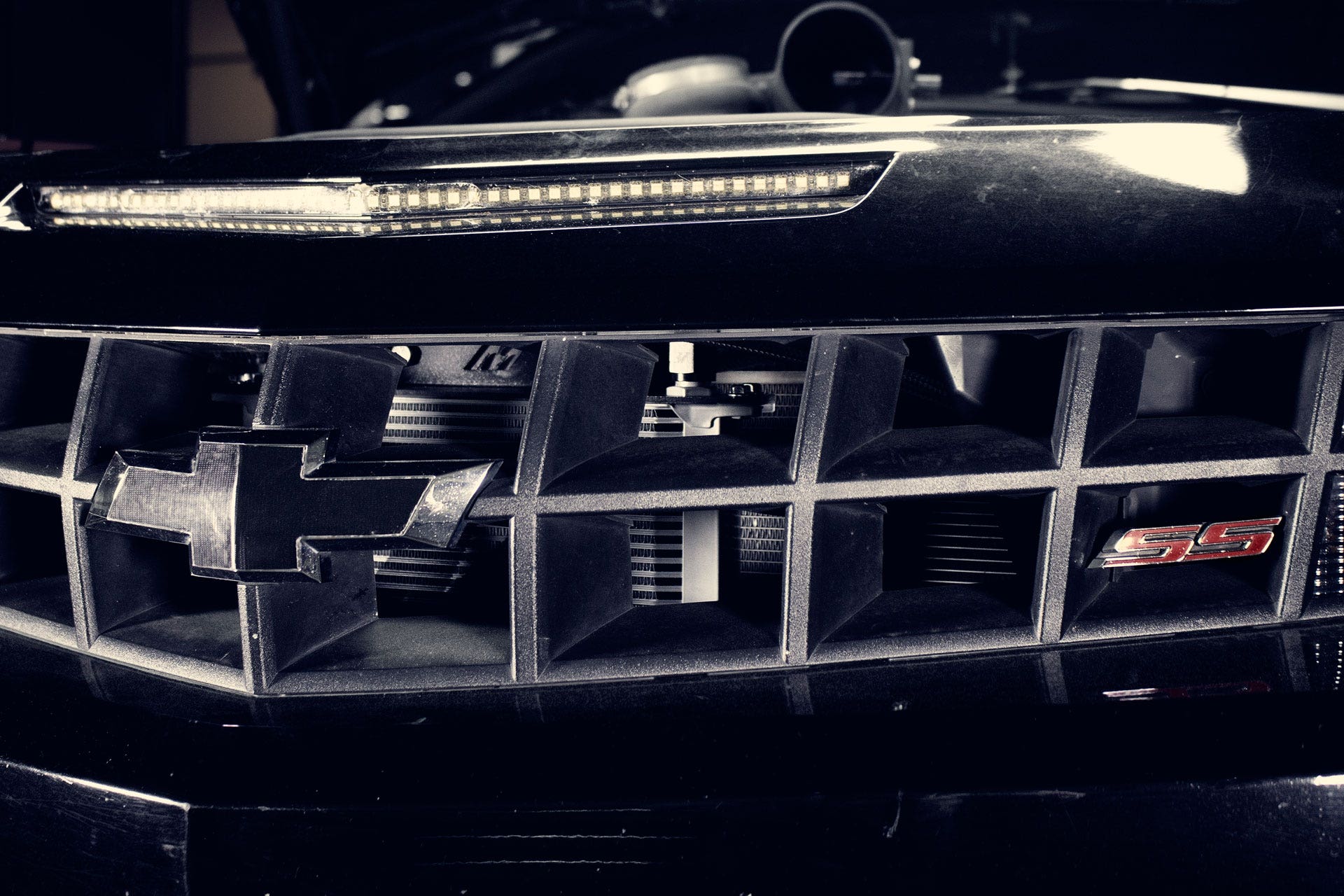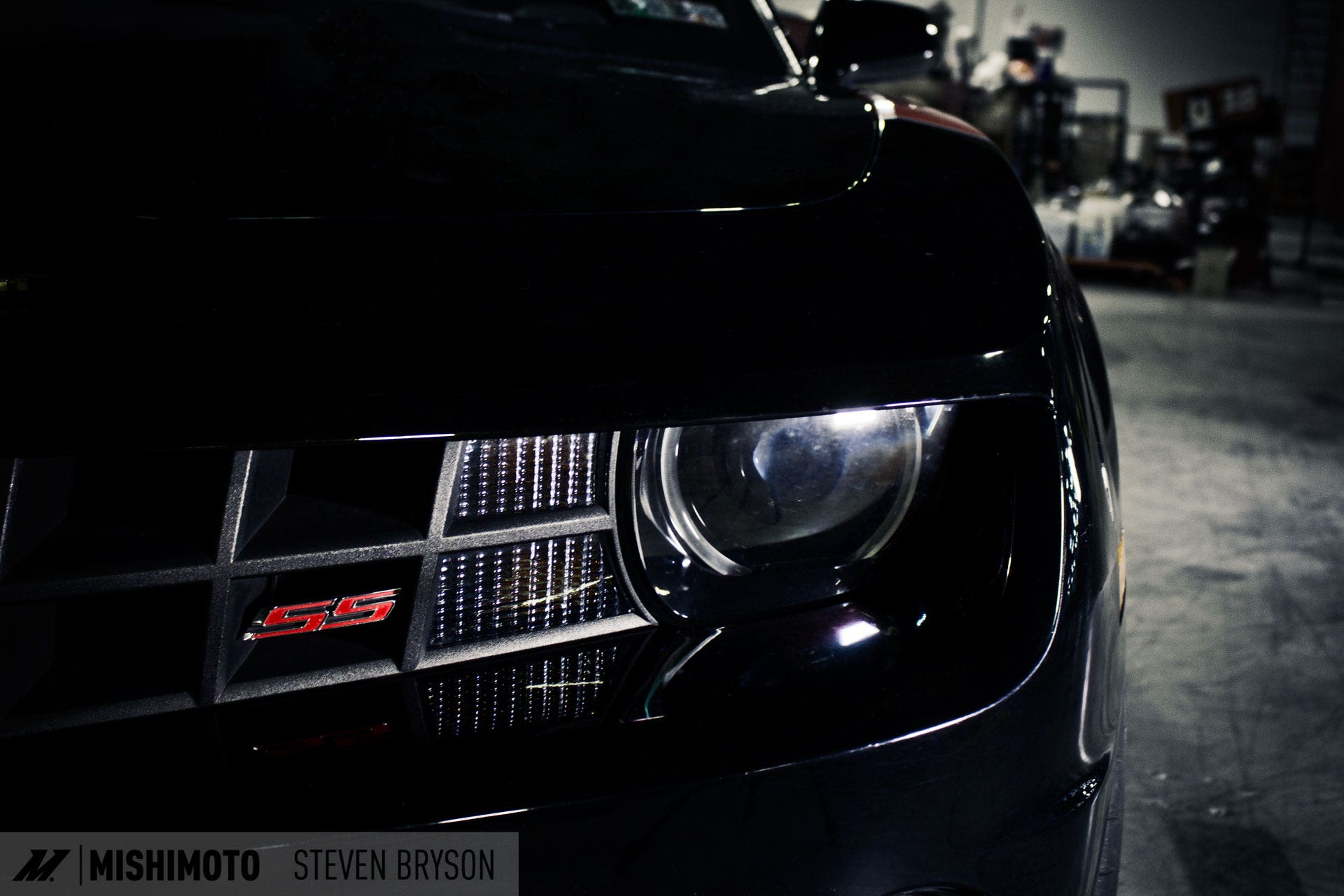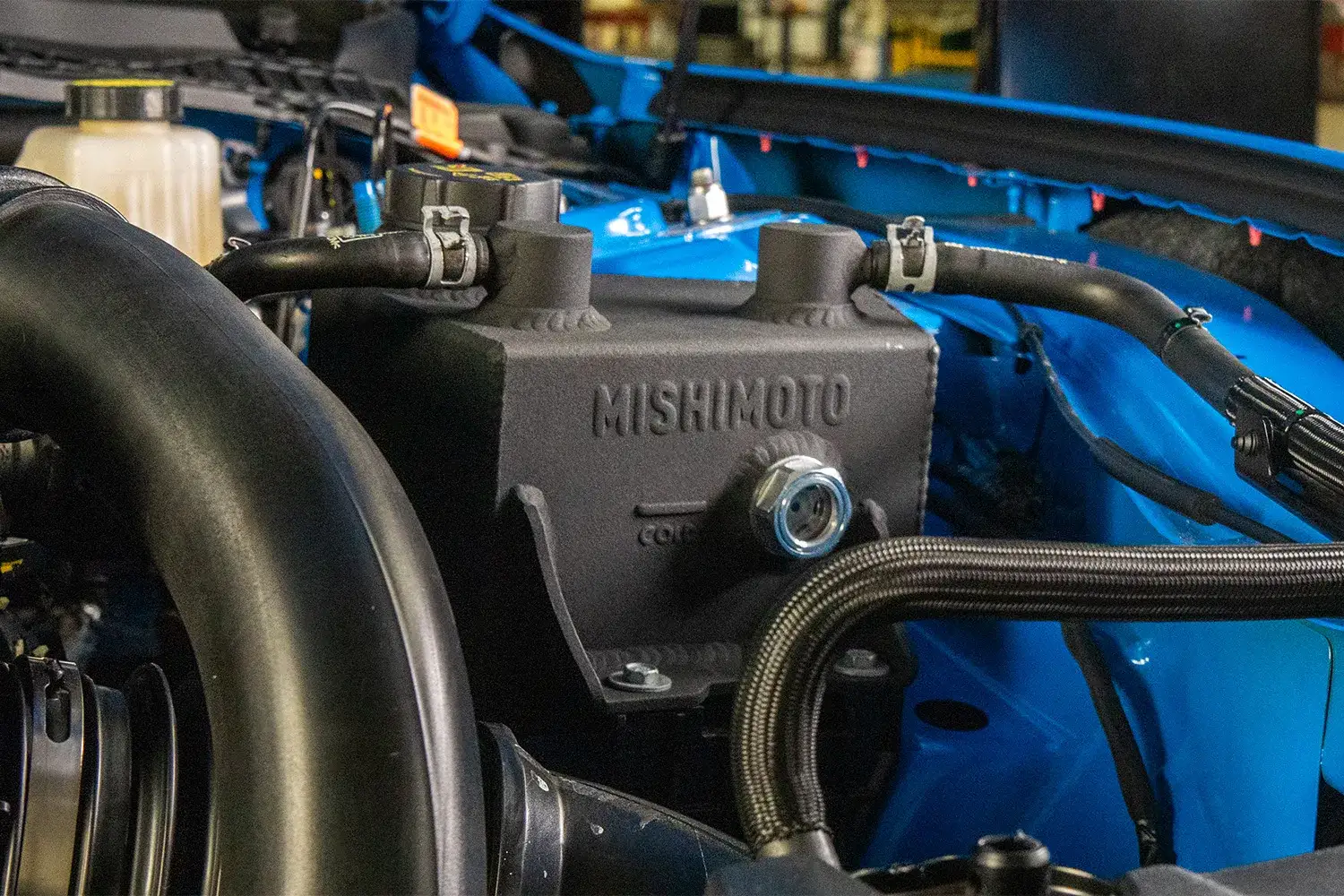The pre-sale for this oil cooler kit is now live! You can purchase the 2010-15 Camaro SS Oil Cooler Kit here!
There's nothing quite like the feeling of powering down the long straight, your right foot trying to turn the throttle into dust, hurtling towards the first turn. As the engine RPM climbs into the red you tell yourself not to lift, keep that foot down until the last second. You've put your heart and soul into your Camaro's engine, and you've placed your trust in your Mishimoto oil cooler. All you need to do now is keep your foot down and let them both do their jobs.
Combating high oil temperature is something that almost every 5th Gen Camaro SS owner has experienced. The factory liquid-to-liquid oil cooler that we examined in the last post










